
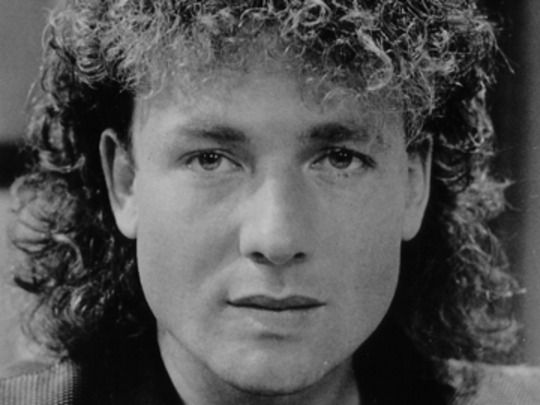
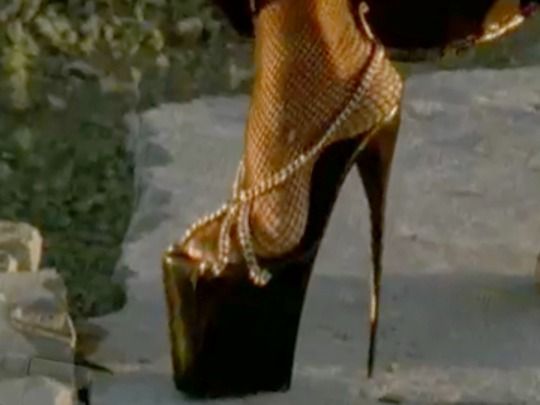
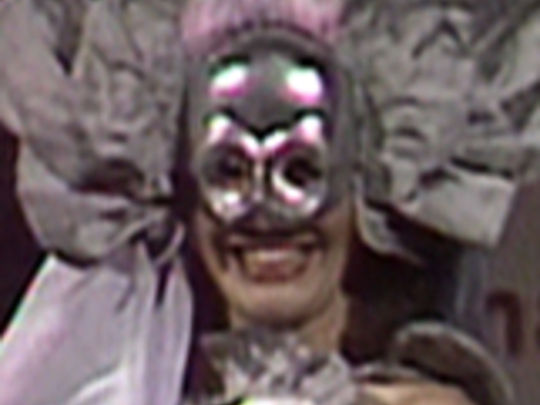
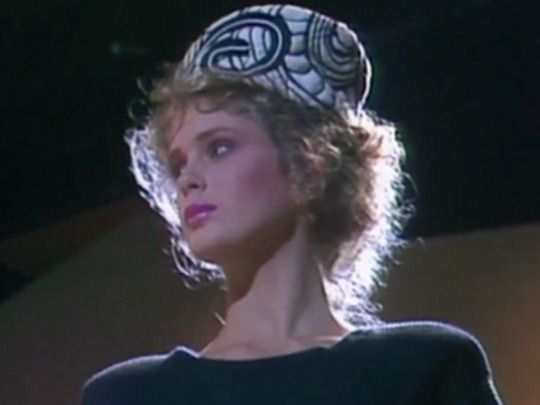
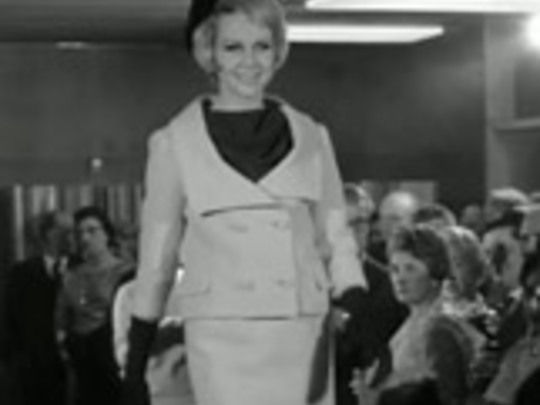
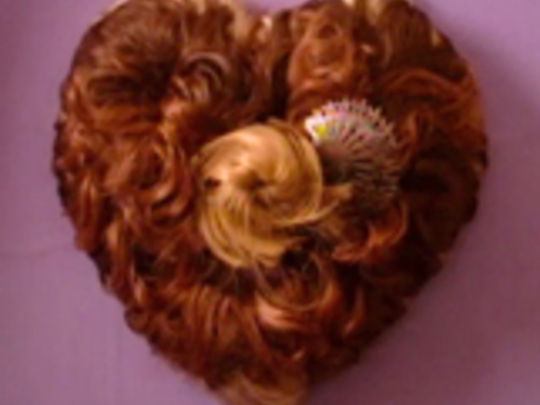
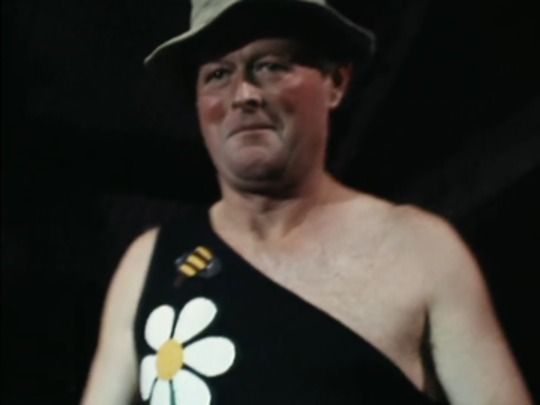
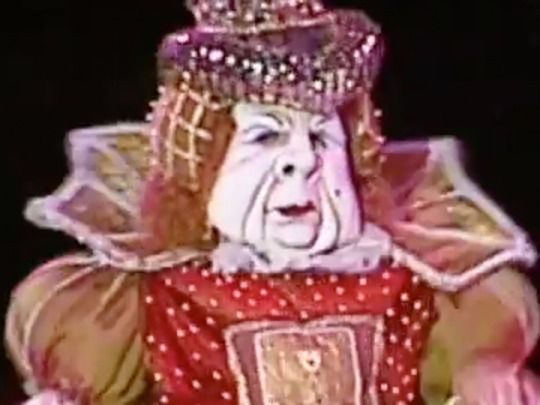
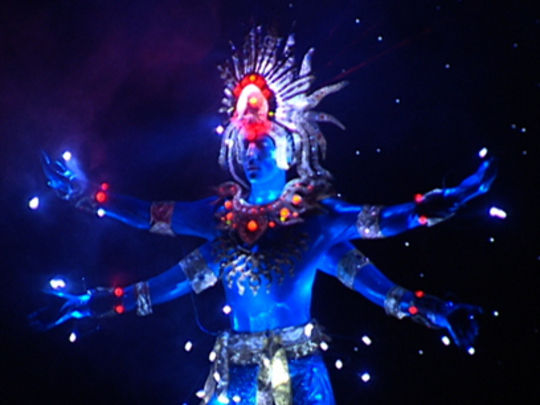
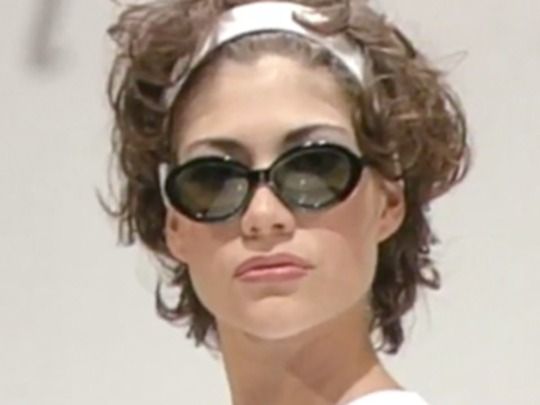
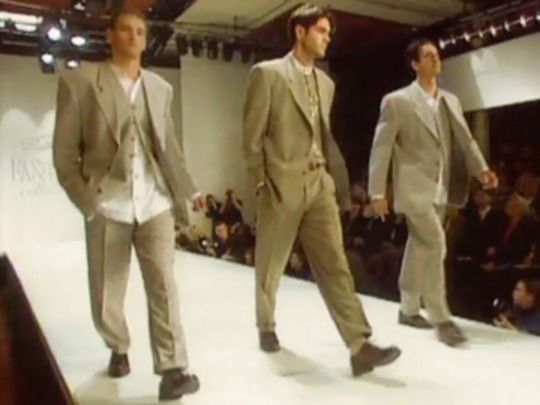
NZ Fashion On Screen
NZ Fashion On Screen
This collection has two backgrounds:
Small screen style

Dynasty, Gloss, taffeta and the telly

Small screen style

By Claire Regnault 21 Sep 2010
In 1965, Tam Cochrane, the Auckland promoter behind the sensationally popular travelling fashion extravaganza known as the New Zealand Gown of the Year, unexpectedly called it quits. Her reason? The increasing popularity of television was killing ticket sales for live entertainment.
Rather than heading out to the theatres, dance halls and cabarets, New Zealanders were clustering around the small screen. While it defeated Cochrane, others in the fashion industry found a powerful ally in the world of television.
Nowhere was this better demonstrated than on the popular 60s music show, C’mon, which provided viewers with an up-to-the-minute showcase of the latest music and by proxy with-it gear. Gabrielle Sinton and Nicky Boyles of Auckland’s Bizarre Boutique were invited to design six outfits a week for the show’s dancers — their only criteria was that they had to be short and easy to go-go in.
Annie Bonza, a designer popular with C’mon regulars Ray Columbus and The Chicks, and ‘the city’s young switched ons’, also applied her distinctive style and the desire to go wild to the show, as did Gerry Broughan of His Lordships. As the publicity ran, Broughan designed for the "anti-heroes, the new elite, the inner-than-in and the relaxed arrogant". Naturally, pop stars, including Larry’s Rebels, The Avengers and Mr Lee Grant, were among them.
For those who didn’t like their fashion set to a frenetic beat, televised fashion shows offered a more refined pace. While the TV news covered fashion spectaculars and pageants on a regular basis, it was the Benson & Hedges Fashion Awards that formed a long-term relationship with television and audiences. Founded in the 1960s, the Awards attracted regular coverage in the 1970s, and in 1984 was given a show of its very own, beamed live.
The B&H Awards became highly-anticipated armchair viewing. As Maysie Bestall-Cohen, the awards’ co-ordinator, commented: “Television brought a completely new perspective to it. It’s a much more complex, much bigger spectacle...”
The awards embraced television to the fullest, utilising the celebrity power of TV personalities as judges (whether they knew anything about fashion or not) and presenters. In 1988, they upped the celebrity quota by inviting stars from TV’s hit new series Gloss to participate.
In comparison to other local productions — the down-at-heel Close to Home, nostalgic Country GP and governmental dreariness of Gliding On, Gloss was set in the glamorous world of magazine publishing. In keeping with the power and money obsessed 80s, it was brash and overdressed. The show was created by producer Janice Finn and Rosemary McLeod, a journalist renowned for her sharp wit who had first-hand experience in the fashion magazine industry.
Naturally the cast of Gloss were impeccably dressed. Take the words of Jasmine Sage, the fictional magazine’s fashion editor (played by former model Geeling Ng): “Darling, in this business, style is credibility”.
Enid Eiriksson and Liz Mitchell (Mitchell had designed the costumes for David Blyth’s controversial 1978 punk thriller Angel Mine) dressed the cast in their own designs and in garments drawn from Auckland’s thriving fashion scene, which was reaping the benefits of the city’s booming economy and champagne-fuelled social scene.
Trelise Cooper of Limited Editions (who also provided Lotto’s hostess with a new gown each week), Jane Daniels, Adrienne Winkelmann, alternative boutiques such as Soo Kim, all benefited from their association with Gloss, as did the 'grooviest' menswear store in Auckland, Monsoon, who produced Clacton & Frinton’s adventurous suits as frequently worn by Alistair (Simon Prast). The sharp-suited men of Gloss were hailed by Metro magazine as being the best thing to happen in men’s fashion in New Zealand for decades.
The country’s fashion industry revelled in Gloss’s public success, and frequently colluded to blur the lines between reality and fiction. In 1988 Ilona Rodgers, who played Gloss editor Maxine Redfern, presented Alison Hutton with the B&H Supreme Award dazzlingly dressed in a metallic gown. To add to the confusion, Eiriksson and Mitchell, who also worked behind the scenes at the awards, submitted several of their Gloss designs for the awards.
In the 1990s the B&H Awards were joined on screen by the Corbans Fashion Collections / Wella Fashion Report. Where the B&H increasingly celebrated the one-off and avant-garde, the ‘report’ provided a preview of what viewers would find in stores that summer or winter.
It featured popular mainstream labels such as Peppertree and Thornton Hall who had been dressing New Zealanders since the 1960s, and by 1993 began to embrace new generation labels, such as Zambesi and Workshop. The latter shook up the traditionally polite show, when true to the multi-cultural spirit of their brand, they sent Pākehā, Māori and Polynesian models cast from all walks of life down the catwalk.
Workshop’s creative team included Rosanna Raymond, a ‘breakthrough’ model of Samoan ancestry, who through her work in the industry as a model, stylist and performer was determined to ‘brown-up’ the industry. Raymond was also connected to Style Pasifika — a live showcase of ‘New Zealand’s raw and indigenous style’. As Raymond commented: “Pasifika was not an exposition of fashion from the islands. It was about Polynesia culture within New Zealand ... It goes beyond culture and, to some degree, it involves casting off a lot of semi-traditional baggage.”
The 21st century witnessed the arrival of Fashion Week on our screens. In 1999 London Fashion Week dominated the media’s attention as four New Zealand fashion companies — NOM*d, Karen Walker, Zambesi and WORLD — strutted their stuff at Olympia to rave reviews. We hadn’t just made it here, we’d made it there.
Two years later Pieter Stewart decided it was time to bring the world’s most influential fashionistas down under, and launched New Zealand Fashion Week. While a trade event, the week was seized upon by an enthusiastic media, including the country’s primetime news channels, who clamoured for backstage passes and front row seats. Such was the media frenzy generated, that a publicist exclaimed in 2008 that, “No event on the New Zealand calendar other than rugby generates as much interest as Air New Zealand Fashion Week”.
Fashion was hot. Its creators were the country’s new stars. In 2010 TVNZ offers its viewers an all access pass to New Zealand Fashion Week through the web.
Author Claire Regnault is co-writer of The Dress Circle: New Zealand Fashion Since 1940 and Senior History Curator at Te Papa Tongarewa.
Dynasty, Gloss, taffeta and the telly

By Fiona Hawtin 13 Sep 2010
Growing up, I never wanted to be one of those people who obsessed about the newsreader's tie. Turns out that's exactly what I am. Huge cost of living increases. Whatever. Just look at the waistcoat Alison Mau is wearing - and with that striped shirt. Goodness, what was the TVNZ stylist thinking?
I did try to be somewhat deeper than that in my early angst-ridden teens, but if you pair an interest in fashion with the impressionableness of youth and a fascination for the lavish soap opera Dynasty, it follows that I will always watch television as much for the "what are they wearing?" as the actual content.
Back in the 80s the internet didn't exist, so logging onto style.com to see what had just come off the runways in Paris, New York, London and Milan was never an option. For glamour, it was the occasional music video, movies and the odd Vogue magazine.
Mostly, fashion updates came via television. I preferred those programmes with high glamour. And there was none better than Dynasty, which ran from 1981 to 1989, to deliver the last word in 80s excess. Forget the insipid Krystle Carrington. It was the grand high bitch Alexis Carrington, played by Joan Collins who was in her late 40s when the series started - all power to women of a certain age. Her dramatic and well-dressed presence made a lasting impression and may explain my ongoing fascination for heated rollers.
The show's costume designer Nolan Miller saved the best for her, from extravagant gowns to whopper diamond necklaces, enormous hats and co-ordination money can't buy. It may have been the 80s but Alexis was one of the few women who lived through it stylishly, without excessive use of those dreadful taffeta dresses so beloved by bridesmaids and beauty contestants of the time.
If only I could have got my hands on the fashion line The Dynasty Collection, based on costumes worn by the characters. Sadly, Net-a-porter was some years off.
New Zealand's answer to Dynasty was, of course, Gloss. It had a shorter life at the end of the 80s but it still carried sartorial weight with me because it was made here, therefore the fashion was more accessible.
Costume designer Liz Mitchell latched onto those big-mother shoulder pads early on and magazine editor Maxine Redfern (played by Ilona Rodgers) and, my personal favourite, the slightly ditzy fashion editor Jasmine (played by Geeling Ng) were rarely without them. Under the influence of Gloss I bought a Zambesi tube dress with shoulder pads an American footballer would have been proud of.
That's the thing about fashion on television. It has incredible power of suggestion, and that's even with the advent of the internet and Facebook and Twitter and all these recent social networking tools.
The costumes for the 1993 NZ feature film Desperate Remedies also sent me reeling - but being lavish Victorian there wasn't quite so much danger of me trying to replicate them in my wardrobe. Thank goodness.
As well as our favourite TV dramas, movies and music videos, we 80s and 90s TV viewers also got some actual New Zealand fashion specials: the annual Benson and Hedges Fashion Design Awards and The Corbans Fashion Collections showed us the good, the bad and the downright peculiar of local design, not to mention giving us debut appearances from models such as Rachel Hunter, Hilary Timmins, and later, Kylie Bax.
Pieter Stewart was the driving force behind The Corbans Fashion Collections, which eventually evolved into NZ Fashion Week, which celebrates its 10th anniversary this year. Fashion Week has had a huge influence on the New Zealand fashion scene, and generates massive amounts of coverage on television and other media.
These days our fashion designers get significant media coverage, and this NZ On Screen fashion collection includes documentaries and arts series items on the likes of Kate Sylvester, Nom D, and twenty-seven names, as well as specials on the Wearable Art Awards and Style Pasifika.
So we have had our fair share of NZ Fashion on screen, but for the lean periods, I can always get back to critiquing the newsreaders, until the next big thing on the small screen comes along!
- Fiona Hawtin spent six years as the editor of Fashion Quarterly magazine. She later opened desert catering service Violet Patisserie, before returning to editing with Your Home and Garden magazine.